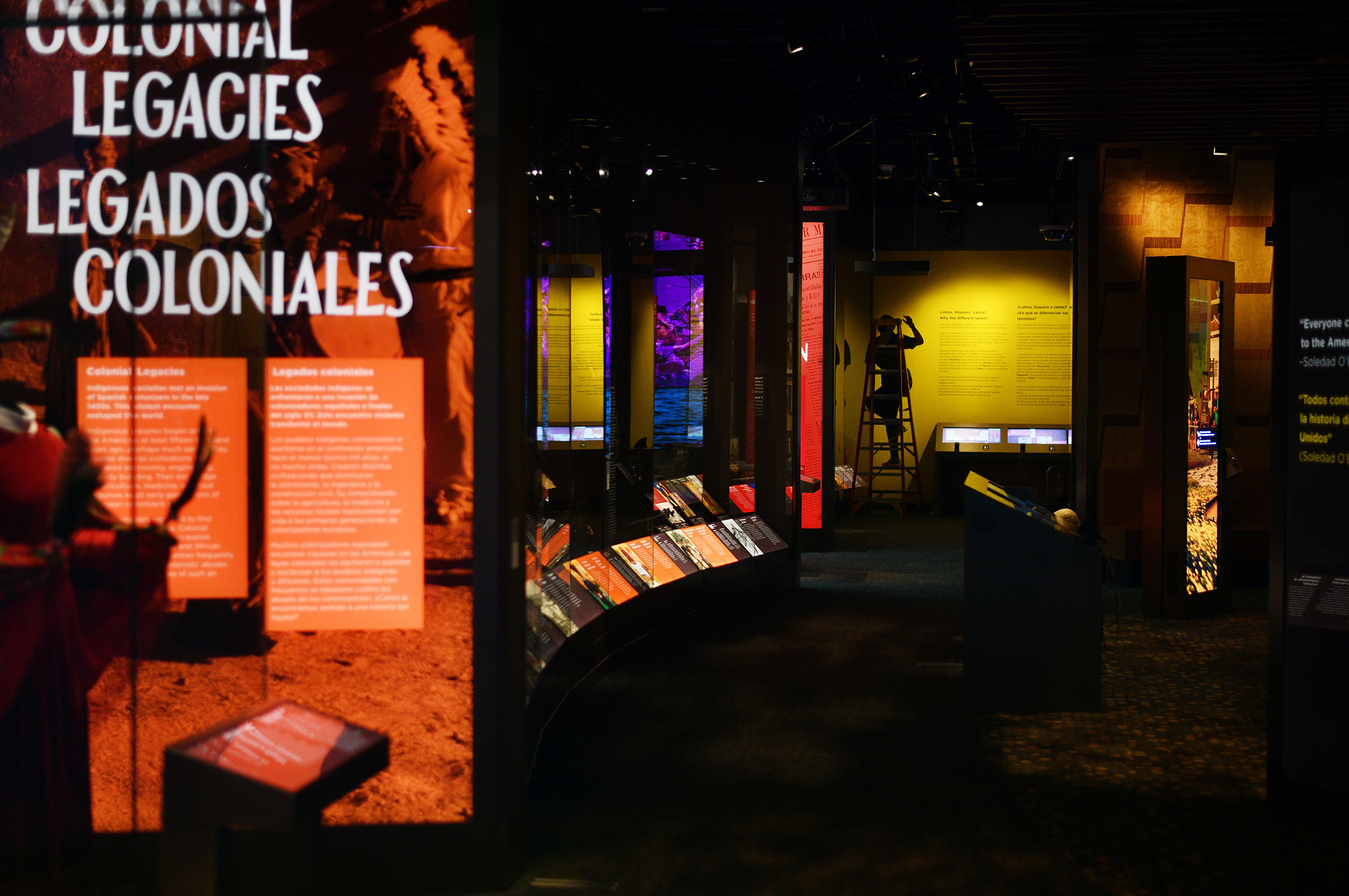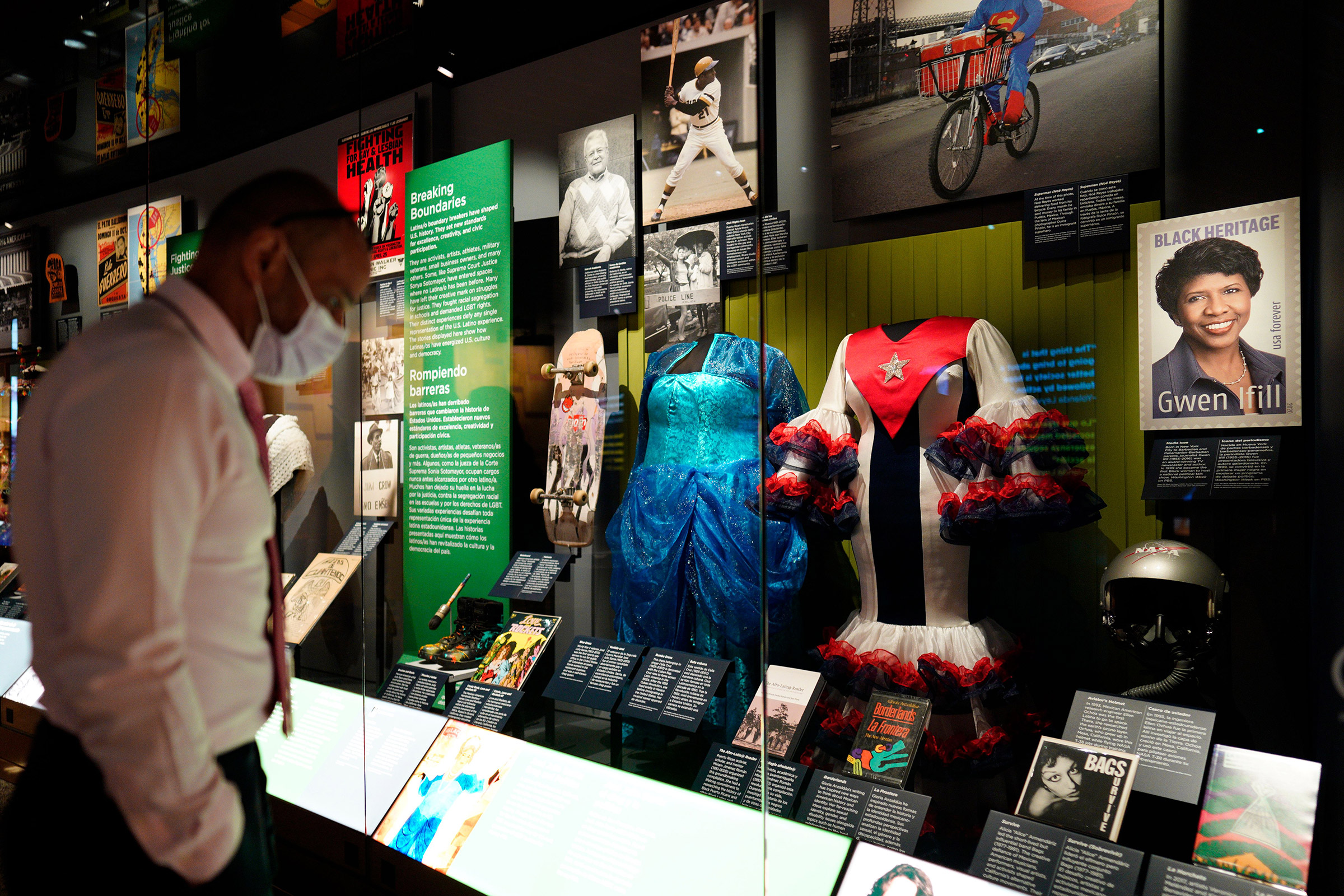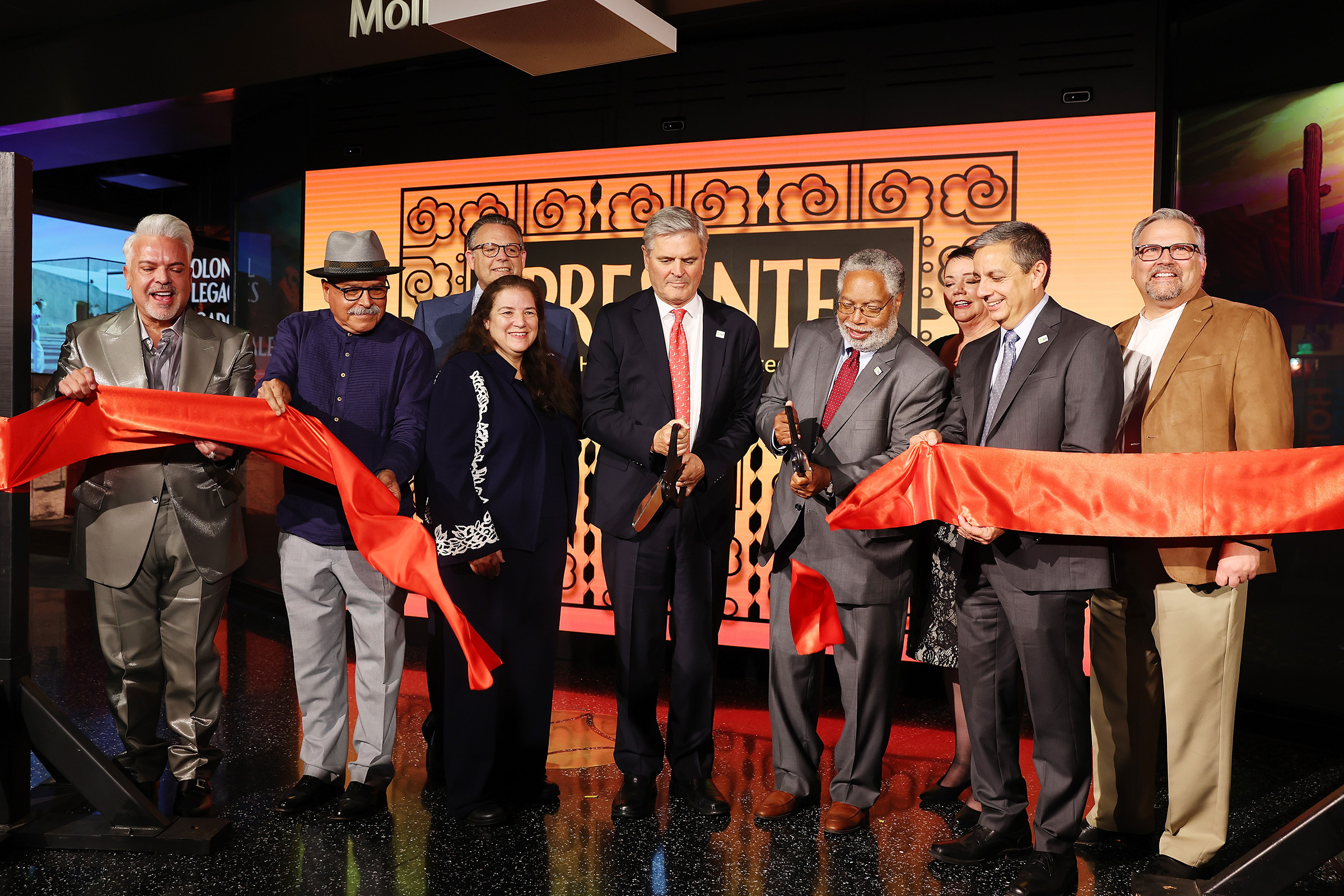The National Museum of the American Latino doesn’t even have a building yet, but its work is already controversial.
For the last two years, historians had been working on an exhibit about the history of Latino youth movements that would help serve as a preview for the new museum. The show was supposed to be the largest federally funded Smithsonian exhibit on Latino civil rights history, and it drew input from the nation’s top Latino historians and veterans of the movement. It was set to feature student walkouts, efforts to integrate schools, and environmental and immigration activism.
But after pushback from conservative Latinos in the private sector and the halls of Congress, that exhibit is on hold. A new one on salsa and Latin music is being developed in its place, the Smithsonian confirmed to TIME.
The incident is part of a larger fight that will determine who gets to tell the history of Latinos in the museum dedicated to it. The fate of the museum itself may be at stake. On one side are liberal historians like Johanna Fernandez and Felipe Hinojosa, two of the scholars who helped develop the paused exhibit. On the other are conservative Hispanic political activists and Cuban-American politicians like Florida Congressman Mario Diaz-Balart, who voted to defund the museum this summer. “If conservatives are serious about culture wars, they should definitely defund this museum,” says Alfonso Aguilar, the President of the Latino Partnership for Conservative Principles.
Caught in the middle are Smithsonian administrators. When asked why he switched the focus of the next preview exhibit from Latino youth movements to salsa, the museum's director Jorge Zamanillo said the music exhibit would have "broader appeal." "I need to think about—we're going to have over 100,000 square feet of public exhibition space in a future museum—how do I fill that? What stories do I tell that have a broader appeal?" Zamanillo told TIME in a phone conversation on Sept. 14.
More From TIME
The dispute shows how the larger culture wars over the teaching of American history are affecting museums—even at the prestigious Smithsonian, the world’s largest. As Hispanic Heritage Month begins Sept. 15, the fight over the museum is fueling a debate about how the story of the American Latino—the second largest racial and ethnic group after non-Hispanic White Americans—should be told to an international audience. Conservative activists are adamant that Latinos should not be painted as victims of oppression, while liberal historians believe that the Latinos’ fight against injustice is a vital part of this history.
“The tragedy and really the story here,” says Hinojosa, a professor of History at Baylor University, “is around who controls the future of Latino history.”

Congress formally established the Latino history museum in Dec. 2020 at the same time it authorized a museum for women’s history. According to the bill, 50% of the museum’s funding will come from the federal government. The museum is working on raising the second half—which Zamanillo says is at least $500 million—from private sector donors and the public.
The Smithsonian has already identified two potential sites for the Latino history museum in D.C.—one at the Tidal Basin, home to several national monuments, and one across the National Mall from the National Museum of African American History and Culture. But the Smithsonian needs additional congressional authorization to start construction, and a spokesperson for the museum says that it is still 10-12 years away from opening to the public in its own building.
In the meantime, the Latino museum has a space where it can put on exhibits and try to drum up enthusiasm for the project: the 4,500-square-foot Molina Family Latino Gallery at the National Museum of American History. “¡Presente! A Latino History of the United States” has been on display since June 2022, billed as a preview of what the National Museum of the American Latino will eventually look like. "The Molina Family Latino Gallery is the first iteration of the National Museum of the American Latino," Zamanillo said in a June 14, 2022, statement on the opening of ‘¡Presente!’, explaining that “the gallery gives the public a preview of the museum’s potential."
Behind the scenes, Fernandez and Hinojosa were developing an exhibit on Latino civil rights history and youth movements that was supposed to be put up in the Molina gallery after ‘¡Presente!’, in 2025. But what they didn’t account for is that the future of that exhibit—and perhaps the museum as a whole—hinged in part on reaction to ‘¡Presente!’. And in certain influential corners of Washington, ‘¡Presente!’ was not getting a good reaction.
Shortly after ‘¡Presente!’ opened last summer, The Hill published an op-ed by three conservative political commentators headlined, “The Smithsonian’s Latino exhibit is a disgrace.” The authors were Aguilar; Joshua Treviño, a director at the Texas Public Policy Foundation who previously worked in former President George W. Bush’s administration; and Mike Gonzalez, a fellow at the conservative think tank The Heritage Foundation who was a member of the 1776 Commission that Donald Trump appointed partly in reaction to the New York Times’ 1619 Project, which aimed to reframe the story of America’s founding over the first Africans landing in Virginia. If what was on display at the Molina gallery was any indication of what the National Museum of the American Latino would be like, it will be an “unabashedly Marxist portrayal of history, religion and economics,” the authors wrote. “Its only redeeming quality is that it makes clear why the forthcoming National Museum of the American Latino must not be funded.”
After the Hill op-ed came out, Zamanillo started fielding angry calls from members of Congress and former members of Congress, according to a Smithsonian employee who requested anonymity because they were not authorized to discuss the controversy. David Coronado, senior communications officer for the museum, denies Zamanillo received such calls. For a few months after the op-ed, the director didn’t call for any major changes.
But Fernandez and Hinojosa say that in the weeks that followed they began to feel pressure from the leaders of the museum to hammer home positive themes in American history in their future Molina gallery exhibit and steer clear of militant figures and controversy. “They would rather have this sort of linear immigrant American story of coming to this country, finding opportunity, succeeding, assimilation, rather than slapping the Puerto Rican flag to the top of the Statue of Liberty in 1977 in New York,” says Hinojosa.
On Nov. 28, 2022, Fernandez and Hinojosa got an email from Zamanillo informing them that their exhibit would be put on hold.

While Fernandez and Hinojosa say they never found out what exactly in the Latino civil rights history exhibit prompted that decision, they believe it was because they planned to feature a variety of counter-cultural organizations of the 1960s that questioned how well American democracy was meeting the needs of its citizens under a capitalist system. Among the milestones the exhibit was going to highlight: the first patient bill of rights drafted by the Puerto Rican activists known as the Young Lords; the 1968 walkouts in which 20,000 Latino students protested discrimination in schools; and the lawsuit by five Latino families that predated the landmark U.S. Supreme Court school desegregation case Brown v. Board of Education. It was also set to include sections on modern-day parallels, from Latino activism on behalf of recent migrants to the environmentalist movement that emerged in the aftermath of Hurricane Maria that ravaged Puerto Rico in 2017.
But the scholars say they were having trouble getting in touch with Zamanillo to get an explanation. The week after they received the email, on Dec. 8, they joined a virtual town hall with Zamanillo, curators, and museum staffers. He told the group that the exhibits at the Molina were as much about fundraising for the history museum as they were about raising awareness about Latino history, according to multiple people who were on the call. As Hinojosa describes the conversation to TIME: “The only sense that we got directly from him was that this was a fundraising issue and that an exhibit like ours was simply not going to raise the kind of money that the museum needed to raise in order to be operational in 10 years.” Zamanillo argued that the gallery at the National Museum of American History is not a place to show complicated history, according to those on the call.
The museum and its advisors admit that they are reconciling different constituencies in pursuit of an open and thriving museum. Zamanillo told TIME on Sept. 14 that his "number one priority is fundraising." Zamanillo says of the paused exhibit: "We know that those are important stories to tell, but we also know that we want to reach broader audiences."
Coronado denies that the museum's decisions about exhibits are influenced by political concerns. But others involved in the process say politics are at play. “We do hear about the political pressure,” says Matthew Garcia, who is a senior member of the Scholarly Advisory Committee for the Smithsonian’s National Museum of the American Latino, a group of scholars who make sure the content in the museum’s exhibits is historically accurate.
Some who work for the Smithsonian believe that political pressure from conservative Cuban American politicians related to the ‘¡Presente!’ exhibit factored into the decision to halt the one on youth movements. “This is a case of the ultra-conservative right-wing Cubans determining the story of Latinos in America that is allowed to be told,” says Fernandez, associate professor of history at Baruch College.
Diaz-Balart, who sits on the House Committee on Appropriations, is one Cuban American Republican politician who has publicly criticized the National Museum of the American Latino. He said he was “offended” by the ‘¡Presente!’ exhibit currently on display at the National Museum of American History. A spokesperson denied to TIME he had any role in the shift of focus of the 2025 Molina gallery exhibit.
Between Nov. 28, 2022 and July 2023, things quieted down. But then Congress began its annual budget talks, and the future of the entire museum was put in jeopardy. A version of a fiscal year 2024 spending bill that funds the Smithsonian passed by the House Appropriations committee said, “None of the funds made available by this Act shall be obligated for the planning, design, or construction of the National Museum of the American Latino or the operation of the Molina Family Latino Gallery.”
The Smithsonian moved quickly to appease lawmakers, agreeing to revise the process for reviewing museum content. A July 27, 2023, statement co-signed by Diaz-Balart and his Congressional Hispanic Conference co-chair Tony Gonzales said that changes in the process of reviewing museum content were made at a meeting attended by the head of the Smithsonian Lonnie Bunch.
Coronado declined to say what specific changes were agreed to. A Smithsonian employee told TIME that labels in the Molina gallery exhibit are being changed. Bunch did not respond to a request for comment. Whatever the Smithsonian's leaders did seems to have worked: Diaz-Balart’s office tells TIME that the museum will be funded.
But while House Republicans may have been reassured, other detractors were not. Aguilar, Gonzalez, and Treviño reiterated their call to defund the museum in a second Hill op-ed published Sept. 5, 2023, headlined, “Don’t make taxpayers fund Smithsonian’s Marxist Latino museum.” They called the exhibit in the Molina gallery an “incubator for grievances,” arguing it represents “a dogma” that “divides America between the oppressed and their oppressor, between victim and supremacist — the Marxist playbook. Nobody should be shocked that ‘¡Presente!’ cast Hispanics as oppressed victims.”
The authors do not trust the Smithsonian to run a balanced museum on the history of Latinos in the U.S., citing other Smithsonian content that they say proves a leftist ideological bent, like its website, “158 Resources to Understand Racism in America,” published two weeks after George Floyd’s murder in 2020. Gonzalez told TIME that the ‘¡Presente!’ exhibit overemphasizes “grievances that the left wing thinks people with my last name should have against the United States. This is a travesty. It’s a travesty that American taxpayers would fund such a project against itself—against its own country.”
Advocates for the National Museum of the American Latino will spend Hispanic Heritage Month continuing to push for legislation that could advance construction on a building for the museum. Last week, activists and Latino artists visiting D.C. for the Hispanic Heritage Awards at the Kennedy Center met with Senate Majority Leader Chuck Schumer’s office along with Friends of the National Museum of the American Latino, a nonprofit that advocates on behalf of the museum.
A version of the Latino civil rights history exhibit that Fernandez and Hinojosa worked on is expected to come out in 2027, somewhere at the National Museum of American History, but not in the Molina gallery, where the National Museum of the American Latino exhibits are displayed. Fernandez and Hinojosa still feel burned and are no longer doing any work for the museum. They say relationships they built with Latino civil rights movement veterans are in jeopardy, and it’s uncertain whether those sources will cooperate on a future show after the slight of a paused exhibit.
“We live in La-La Land,” Fernandez says of the nation’s knowledge of Latino history. “White Americans, Black Americans, Latino Americans walking around, really not understanding who we are, why we're here, and how we got to this place. What's so dangerous about honestly grappling with the history of this country?”
Correction, Sept. 18
The original version of this story misstated a group that Rep. Mario Diaz-Balart co-chairs. He is a co-chair of the Congressional Hispanic Conference, not the Congressional Hispanic Caucus.
More Must-Reads from TIME
- Inside Elon Musk’s War on Washington
- Meet the 2025 Women of the Year
- The Harsh Truth About Disability Inclusion
- Why Do More Young Adults Have Cancer?
- Colman Domingo Leads With Radical Love
- How to Get Better at Doing Things Alone
- Cecily Strong on Goober the Clown
- Column: The Rise of America’s Broligarchy
Write to Olivia B. Waxman at olivia.waxman@time.com
